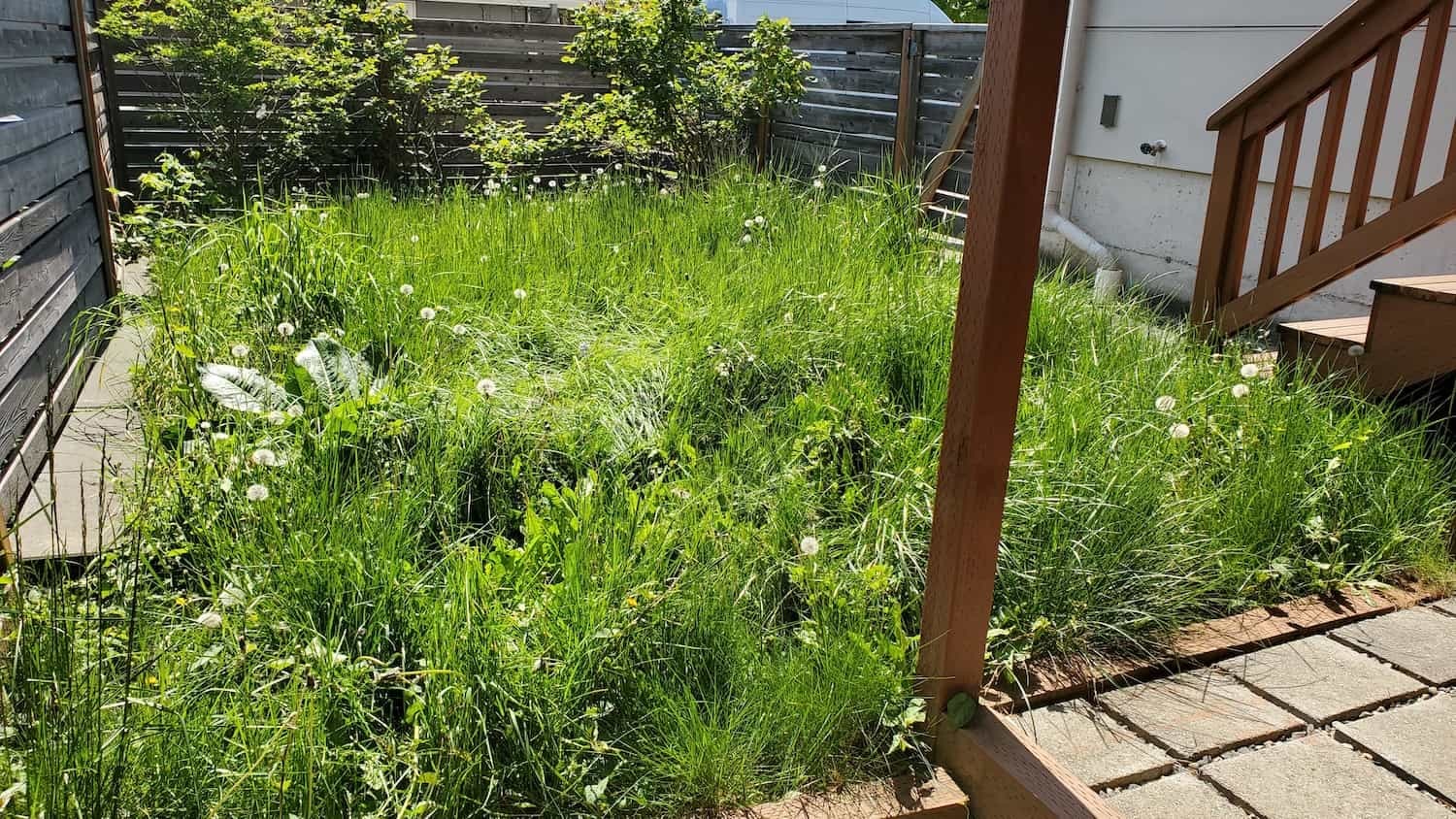West Seattle Remove vines from arbors
Homeowner’s Issue
Vines thrive here. West Seattle’s maritime climate — wet, mild winters and a short dry spell in July–August — plus shaded ravines and compacted fill soils around high piles mean English ivy, climbing roses, wisteria, and volunteer clematis will take any structure as their home. On north-facing sites and under mature maples you’ll see moss and heavy ivy mats; on sunny, south- and west-facing locations vines get woody and rope-like, which stresses arbor joints and fasteners.
Many properties near Lincoln Park, Alki, Admiral, and the Junction have older arbors built from rot-prone timbers. Wet winters accelerate rot where vines trap moisture against wood; steep lots and poor drainage in areas like Fauntleroy drive root spread and make removal harder. HOAs and neighbors expect tidy street-facing arbors, and blocked sightlines on hills are a safety issue. Simple cutting at the top without removing root crowns guarantees regrowth. Sustainable removal in our microclimates needs timing (late winter for structural pruning, summer for easy detachment), careful access on slopes, and attention to root removal so regrowth is minimized.
Our Quality Service
We remove vines without herbicides — hands-on pruning, controlled cutting, root extraction, and green waste haul-away. Our crew brings ladders, hand saws, pole pruners, pry bars, and biodegradable twine for safe lowers. Typical small arbor jobs: half to one day; complex, woody wisteria or large ivy curtains can take a full day or be staged over two visits.
Local insight: we account for West Seattle’s rainy season when planning work to avoid muddy access, and schedule heavy detachment during drier weeks to reduce staining and rot exposure. We focus on preventing structural damage and minimizing regrowth with mulch, root removal, and low-light groundcover options. Benefits: safer arbors, improved curb appeal, lower maintenance, and lasting results with sustainable methods.
What’s Included
- Visual assessment and plan for safe removal
- Top-down cutting to release vines from structure
- Hand-pulling and root crown removal where accessible
- Careful lowering of heavy vines to avoid damage
- Cleanup: branch chipping on-site or green haul-away
- Post-service recommendations for replanting or protective finishes
Options / Upgrades:
- Mulch + fabric (for root suppression at arbor base)
- Organic soil amendment and compost to restore compacted soils
- Replanting with non-climbing, low-maintenance natives
- Haul-away vs. City green bin drop-off (we’ll follow Seattle rules)
Before & After / Expectations
Expect noise (saws, ladders), some leaf and twig scatter, and a focused crew for several hours. On older arbors you may see exposed fasteners, staining, or visible rot once vines come off — we point these out and can refer carpenters. Regrowth: manual follow-up in spring and fall is normal; persistent root fragments will resprout.
West Seattle care tips:
- Do major removal late winter to early spring for best structural visibility.
- Watering: only during dry spells—most removals don’t need extra irrigation unless replanting.
- Watch for peak weed pressure in April–June and again in September.
- Moss and ivy need repeat hand-removal on shady, damp sites; mulch and light-pruning reduce recurrence.
FAQs
Q: Do you use herbicides?
A: No. We remove vines mechanically and by root extraction only — sustainable methods only.Q: How long until regrowth?
A: If root crowns remain, sprouts can appear within weeks. Proper root removal or mulching cuts regrowth significantly.Q: Can you work on steep lots or next to public sidewalks?
A: Yes. We set up safe access, protect sidewalks, and follow city right-of-way rules; slope work may need staging.Q: Will removal damage my arbor?
A: Removing heavy vines can reveal existing damage. We detach carefully to avoid new harm and will document any rot or structural issues.Q: Do you haul debris?
A: Yes — choose on-site chipping, green-bin drop-off, or full haul-away.
Call to Action
West Seattle homeowners: if vines are bleeding into your roofline, hiding rot, or just making the yard look unkempt, book a free estimate. We schedule quickly, prioritize safety on slopes and steep driveways, and use sustainable, non-chemical methods tailored to West Seattle microclimates. Email neatandtidyseattle@gmail.com or call 206-538-9344 to get a photo estimate or set an onsite visit.










